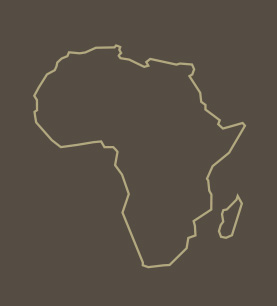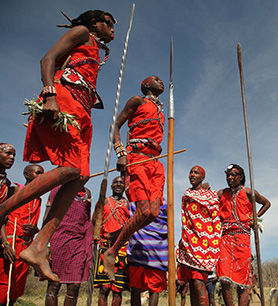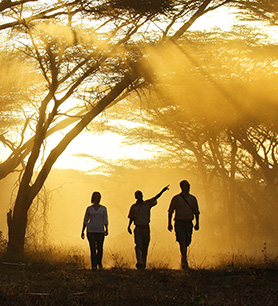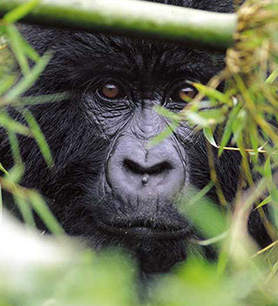The Zeitz MOCAA is the first major museum dedicated to contemporary African art and its diaspora in Africa. Opened in 2017, the museum is located on the Waterfront in Cape Town, South Africa, and was designed by the English architectural firm Heatherwick commissioned by V&A Waterfront and Jochen Zeitz, former CEO of Puma and well-known collector of African contemporary art.
The initiative
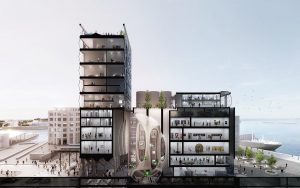 The creation of the museum is the result of two visions: the first one of the V&A Waterfront, the company that manages the Waterfront, the new marina of Cape Town, and the second one of the German businessman and philanthropist Jochen Zeitz.
The creation of the museum is the result of two visions: the first one of the V&A Waterfront, the company that manages the Waterfront, the new marina of Cape Town, and the second one of the German businessman and philanthropist Jochen Zeitz.
Aware of the historical value of the Grain Silo, the old granary abandoned on the Waterfront, the V&A Waterfront has debated for years on the possible recovery of the complex. Eventually it was decided to build an art museum, but a collection was needed.
Here came into play Jochen Zeitz, owner of one of the world’s most important collections of contemporary African art: the Zeitz Collection. The collection was born in 2002 with the ultimate goal of bringing these masterpieces back to Africa, returning them to African people and exhibiting them in a dedicated museum.
In 2013, in partnership between V&A Waterfront and Jochen Zeitz, was born the Zeitz Museum Of Contemporary African Art (MOCAA), a non-profit cultural institution based in the historic granary of the Waterfront in Cape Town.
500 million Rand were invested in the project, mainly to finance the conversion work of the Grain Silo.
History and construction work
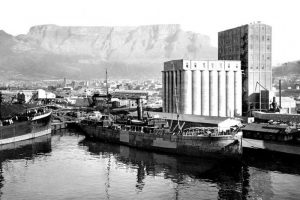 The MOCAA is housed inside the Grain Silo, the old granary located on the Waterfront of Cape Town. Built in 1921, the granary processed tons of wheat, corn, soya and sorghum until 1990, when it was abandoned. The original building is the highest in the city (57 meters) and houses 42 silos with a height of 33 meters and a diameter of 5.5 meters.
The MOCAA is housed inside the Grain Silo, the old granary located on the Waterfront of Cape Town. Built in 1921, the granary processed tons of wheat, corn, soya and sorghum until 1990, when it was abandoned. The original building is the highest in the city (57 meters) and houses 42 silos with a height of 33 meters and a diameter of 5.5 meters.
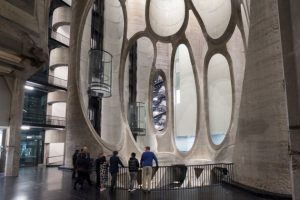 The conversion work of the building was entrusted to the famous architectural firm Heatherwick, founded by the English designer Thomas Heatherwick.
The conversion work of the building was entrusted to the famous architectural firm Heatherwick, founded by the English designer Thomas Heatherwick.
The studio has reimagined the Grain Silo with a visionary and innovative architectural intervention, while respecting the identity and the historical character of the complex. In particular, using the 42 concrete cylinders that make up the silos, Heatherwick has carved out in the center of the building an imposing atrium-cathedral in industrial style, that provides access to the galleries of the museum.
The works lasted about 4 years and the museum was inaugurated in 2017.
The museum and the artworks
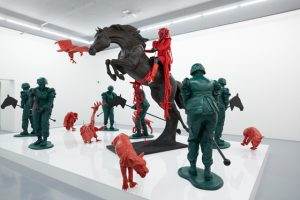 The MOCAA covers 9 floors for about 9,500 square meters, of which over 6,000 square meters are dedicated to exhibition spaces. Zeitz created the permanent collection of the museum, granting his works on a long term loan with the commitment to update them over time and to bear part of the running costs.
The MOCAA covers 9 floors for about 9,500 square meters, of which over 6,000 square meters are dedicated to exhibition spaces. Zeitz created the permanent collection of the museum, granting his works on a long term loan with the commitment to update them over time and to bear part of the running costs.
A large number of artists are represented in the 80 galleries of the MOCAA: among them Nicholsa Hlobo, whose work Dragon opens the exhibition; Athi-Patra Ruga, performer and videomaker loved by Louis Vuitton; in addition, among others, Kudnazai Chiurai, Marlene Dumas, El Anatsui, Julie Mehretu, Wangechi Mutu and Chris Ofili. There is space also for new artists, who were able to exhibit their works here for the first time.
In addition to the permanent collection, the museum boasts a rich schedule of temporary exhibitions about fashion, painting and photography.
Today the MOCAA is the first major museum dedicated to contemporary African art and its diaspora located on the African continent and its permanent collection is certainly the most important in the world.
Not only contemporary art
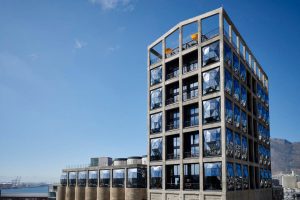 The MOCAA not only houses paintings, sculptures and installations of contemporary art, but also spaces dedicated to other visual arts, from cinema to photography. The museum houses the Centre for the moving image, The Centre for performative Practice, The Roger Ballen Foundation Center for Photography and the Costume Istitute.
The MOCAA not only houses paintings, sculptures and installations of contemporary art, but also spaces dedicated to other visual arts, from cinema to photography. The museum houses the Centre for the moving image, The Centre for performative Practice, The Roger Ballen Foundation Center for Photography and the Costume Istitute.
To promote culture in the area, the museum also houses a workshop dedicated to the curator’s profession and organizes thematic workshops and programs for schools.
In addition to the exhibition spaces, the MOCAA complex includes a restaurant, a library, a bar, a shop, several workshops and reading rooms, and a sculpture garden on the roof.
The last six floors of the building above the museum are occupied by The Sylo, a 5-star design hotel with 28 rooms, an excellent restaurant (the Granary Café) and a rooftop bar that offers spectacular views of Cape Town and Table Bay.
At the end of the first year of opening, the MOCAA has recorded over 350,000 visits, of which about 100,000 for free in application of the policy “Access for All”. The success of the museum has been confirmed also by numerous awards and recognitions, including the inclusion in the list of “100 World’s Greatest Places of 2018” of TIME.
Already renamed the Tate Modern of Cape Town, in a few years the MOCAA has become not only one of the most important art museums in the world and one of the main attractions of the city, but also an extraordinary meeting and divulgation place, achieving the founders’ goal of creating a “platform for Africans to tell their story and participate in the telling that story”.
